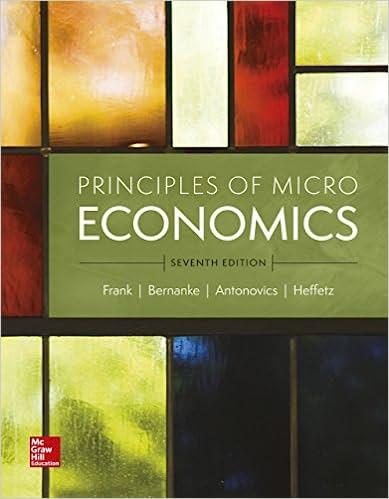
Microeconomics question
Consider a pair of investors A and B who only care about one good wealth at date it : 1. They both know that at date if : 1 the economy will be either in state 1 or in state 2. They both agree that state 2 is twice as likely as state 1. In state 1 A will have the wealth endowment of 6 and B will have the wealth endowment of 18. In state 2 A will have the wealth endowment of 12 and B will have the wealth endowment of 12. Neither investor has any wealth at date 0. At date 0 both investors have access to the nancial markets with the following payoff matrix assets 1 3 states [3 2] The prices of the assets are not specied at the moment, but assume that they are such that there is no arbitrage. Both investors are riskaverse, investor A values wealth y according to oA(y) = Z, investor B values wealth y according to 93(y) = lny. a. (1 mark) Explain what aggregate risk is. Is there aggregate risk in this econ omy? b. (2 marks) Suppose investor A's (B's) wealth is w. Derive the risk tolerances for investors A and B as functions of w. c. (2 marks) Denote with yf' and y; the state levels of wealth that investor A can reach at date 1. Given her wealth endowment at t : 0 and the fact she trades at the market as above what combinations of wealth in (yf', ya space are feasible for A? Your answer should be an equation that connects y? to :91 or vice versa. Hint: it should involve Arrow security prices (d1, 05;) . (1 mark) Derive a similar relationship for the feasible combination of state wealth levels (yiB, y?) for investor B. d. (3 marks) State the Mutuality Principle. According to that Principle how should be wealth allocated in this economy across the investors and across the states? What is that wealth allocation? Your answer should be a pair of allocations for each investor. e. (2 marks) Set :12 : 1. By Mutuality Principle what price (11 will result in equilibrium? Your answer, should, of course, respect the budget constraints and the preferences of the investors. Hint: you should already know the equilibrium allocation of wealth from d. You have to nd the price 021 such that that allocation is the result of the investors\" optimization. You can choose which investor to deal with, since they face the same prices ((113112). f. (3 marks) Derive the equilibrium prices for the original assets (q1, q2) consistent with your answer in e








